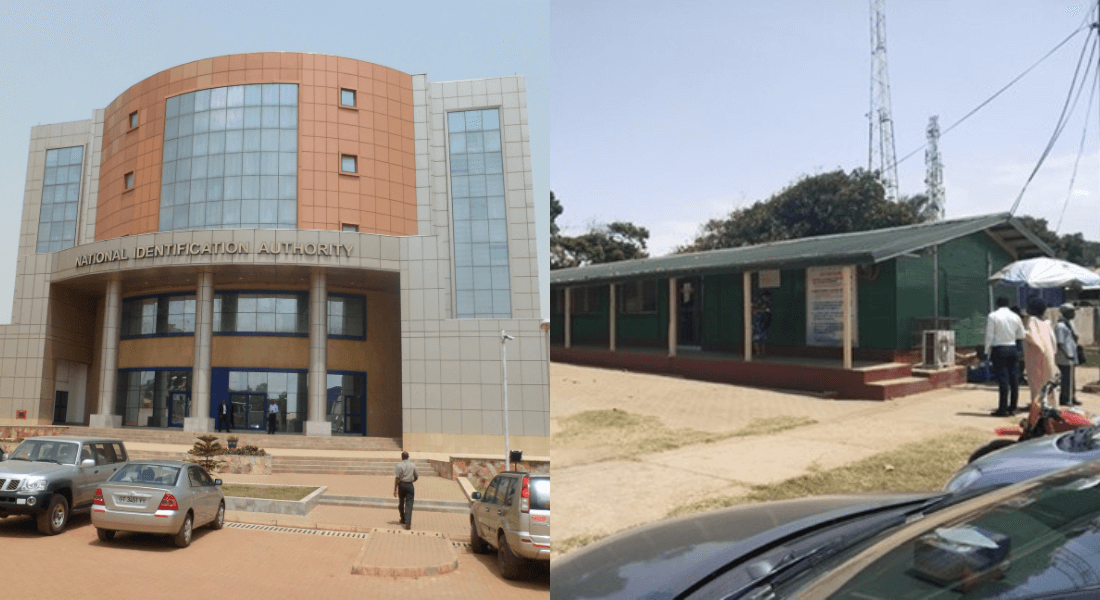Fieldwork reflections: Studying the social life of ‘global’ ID policy
Amanda Wendel Malm, one of CERTIZENS’ PhD researchers, shares some of her fieldwork reflections on the discrepancies in prioritisation of and resource allocation to different spheres of citizen registration

Amanda Wendel Malm, one of CERTIZENS’ PhD researchers, shares some of her fieldwork reflections on the discrepancies in prioritisation of and resource allocation to different spheres of citizen registration, namely National and Digital Identification (NDI) and Civil Registration and Vital Statistics (CRVS). She draws on fieldwork in Ghana, New York and Washington DC.
The pictures above show, respectively, the National Identification Authority (NIA) and the Births and Deaths Registry offices in Accra, Ghana. (The Births and Deaths Registry has recently, in 2022, moved to a new office in a different part of Accra). The contrast between these two buildings is striking. The NIA building has a very modern design with a tiled exterior and a grand, arched entryway, and is surrounded outside by a neat concrete pavement and manicured flowerbed. The Births and Deaths Registry on the other hand, is housed in a modest, single-story, pre-fabricated building, with a simple veranda, looking over a sandy square with small patches of dry grass. The difference in resources allocated to each of these registration bureaux became apparent when conducting fieldwork in Ghana in spring 2022 and prompted reflections on reasons for such discrepancy in national prioritisation. After leaving Ghana physically, I continued reflecting on these differences between the various sections of citizen registration, namely National and Digital Identification (NDI) on the one hand, and Civil Registration and Vital Statistics (CRVS) on the other.
The contrasts in narrative and reality of the parallel spheres of CRVS and NDI surfaced again approximately six months later, now in New York and Washington D.C., where I was conducting fieldwork with the main ‘global’ policy actors on civil registration and legal identity (such as UNLIA, UNICEF, UNDP, UNSD, ID4D World Bank etc.). This confronted me with echoes of similar discrepancies between greater resources and weight placed on NDI as opposed to CRVS at a more global scale. Competing mandates, actors, and prioritisations within the ‘global’ ID policy arena both reflect and generate a complex set of interests that fuel the division between two policy spheres. We can see, for example, dominant policy actors such as the World Bank’s ID4D driving questions of national and digital ID, and simultaneously actors such as the United Nations Legal Identity Agenda (UNLIA) actively working for holistic registration systems. While having received far less attention in the past, CRVS has recently become more visible within the ID4D agenda, and also ID4Africa’s public activities and reports. This raises the question as to whether the NDI and CRVS policy areas are moving closer towards each other and lessening the gap between them.
The tensions yet interconnections between CRVS and National and Digital Identification actors and agendas at both global and national levels have great significance for registration systems that affect millions of people. This points to the importance of studying the political economy of policy processes and the social life and movement of policies in and across time and space, in order to understand how priorities, mandates, and resource discrepancies influence the form(s) that a policy takes in a given context. My PhD research will further reflect upon what the foundations and goals are behind CRVS and National and Digital ID policies respectively, and their implications, focusing on cases in Ghana and Uganda. What are the politics, demands and interests that fuel the perceived discrepancy between the two, and how do these relate to other frictions, dynamics and policy movements within the ‘global’ ID policy regime more widely.
